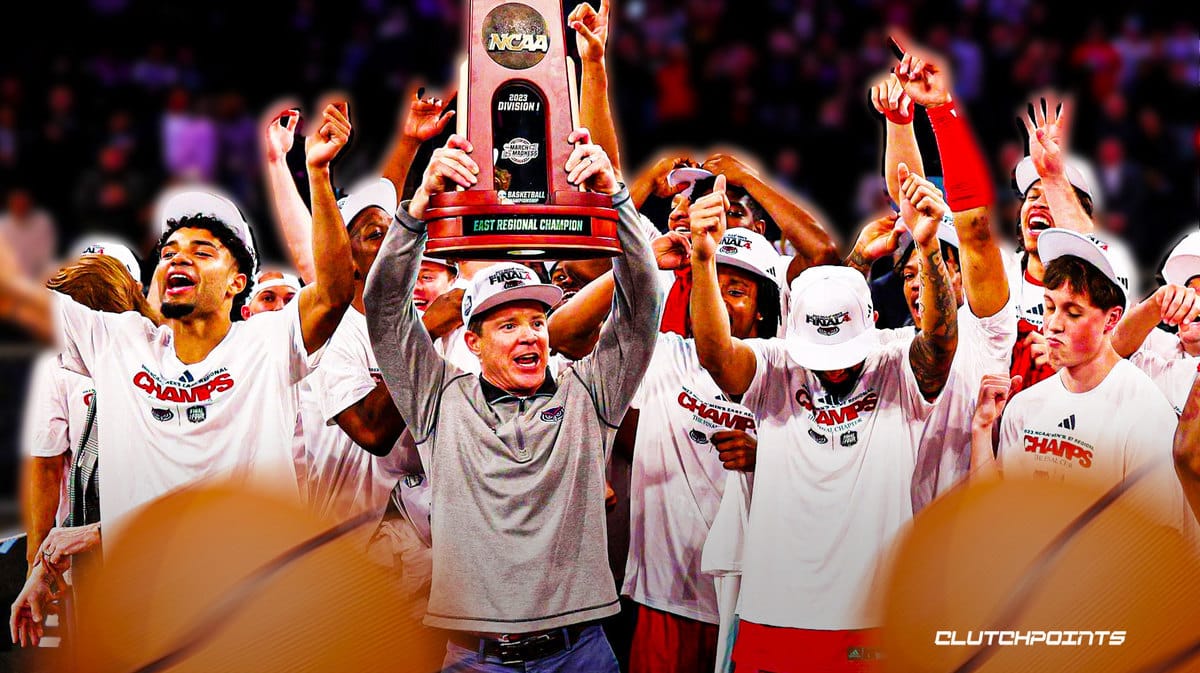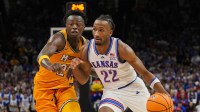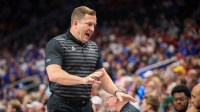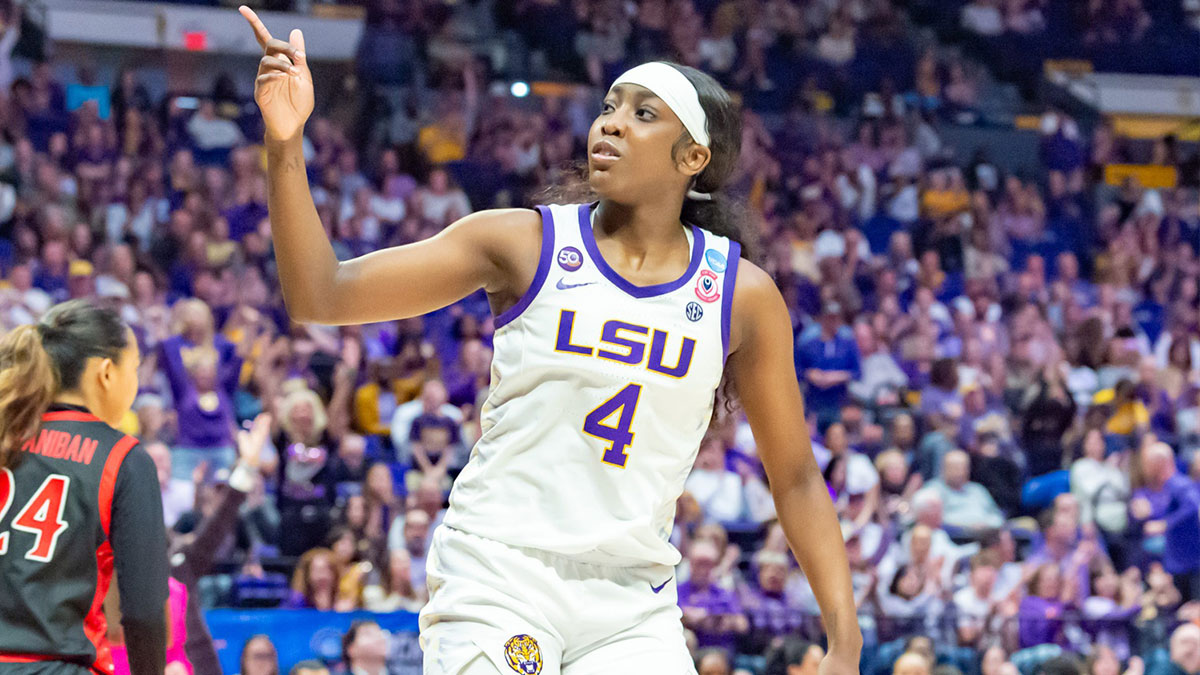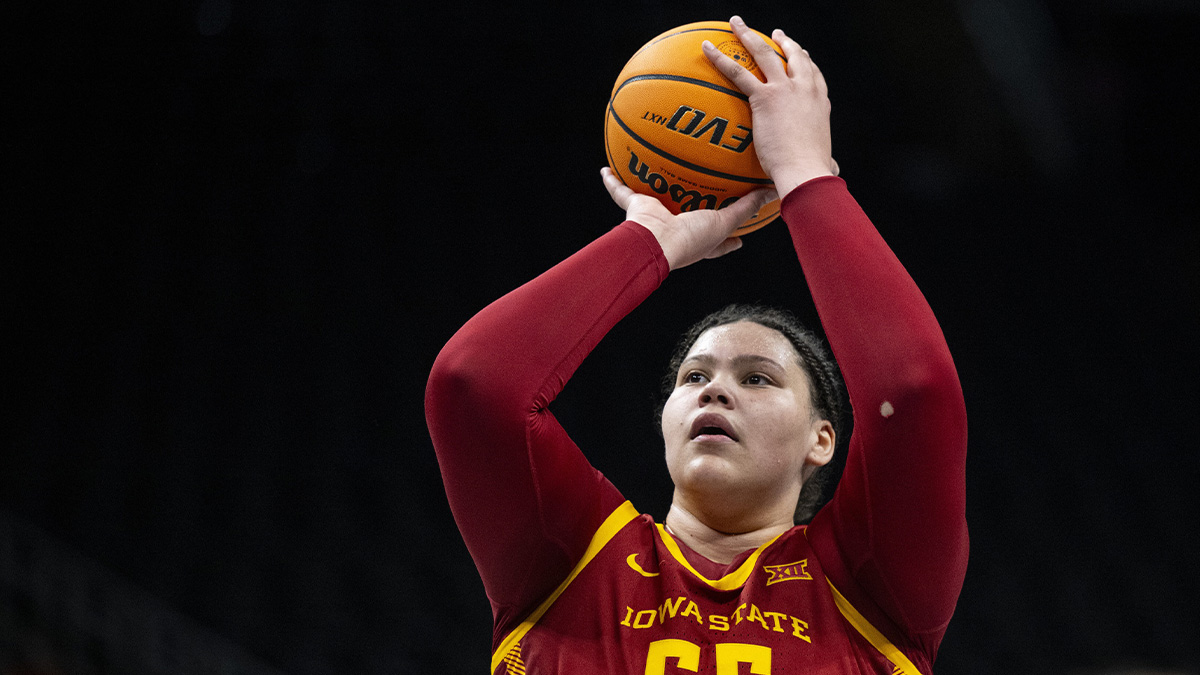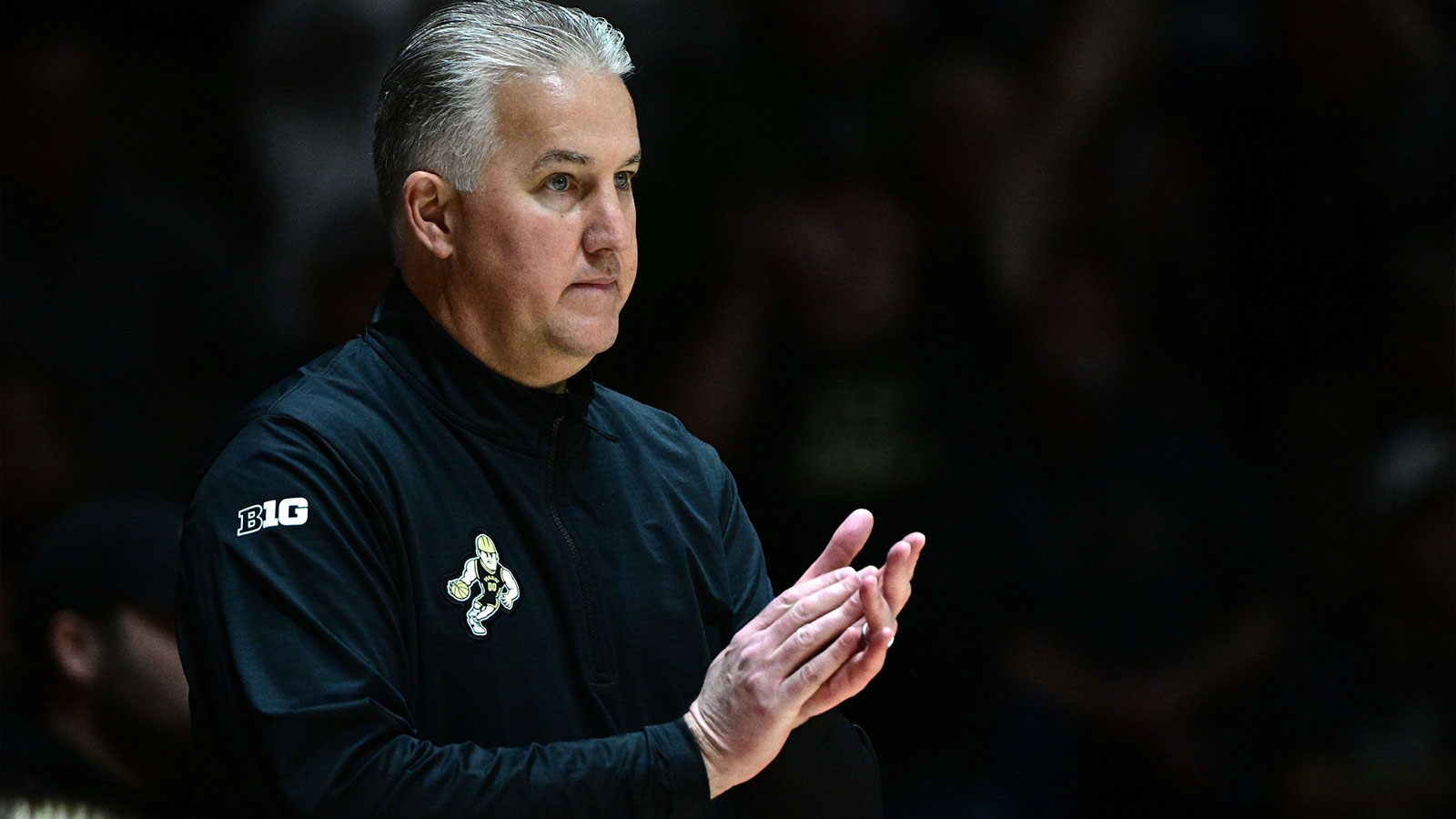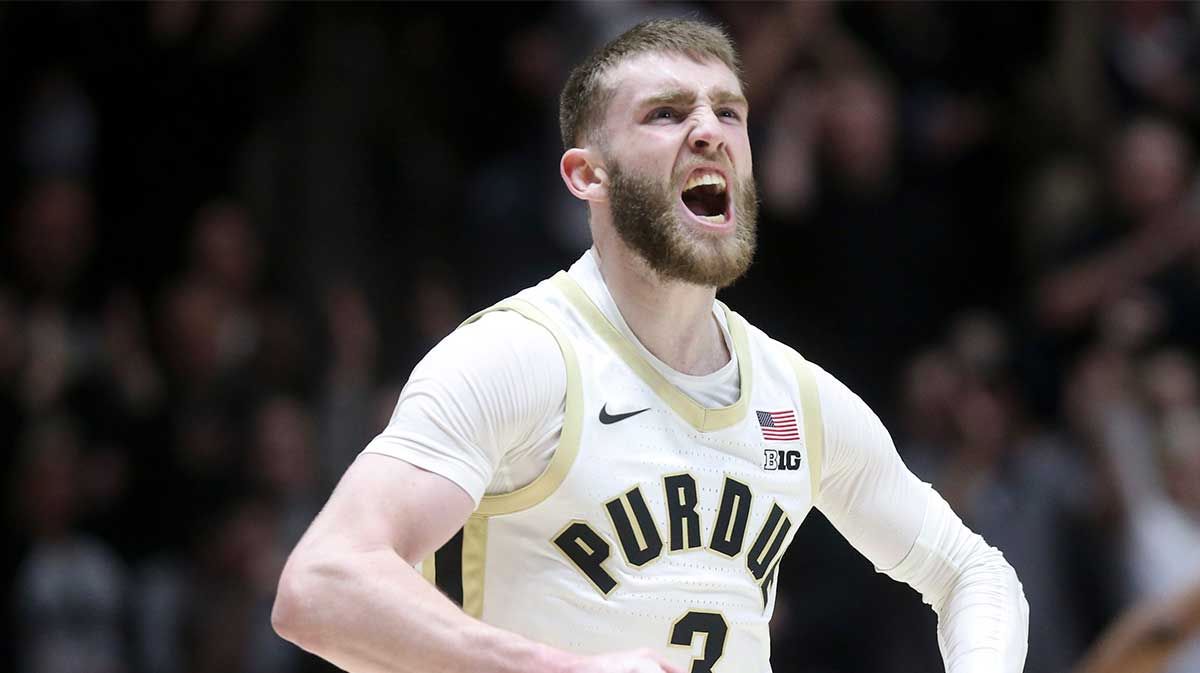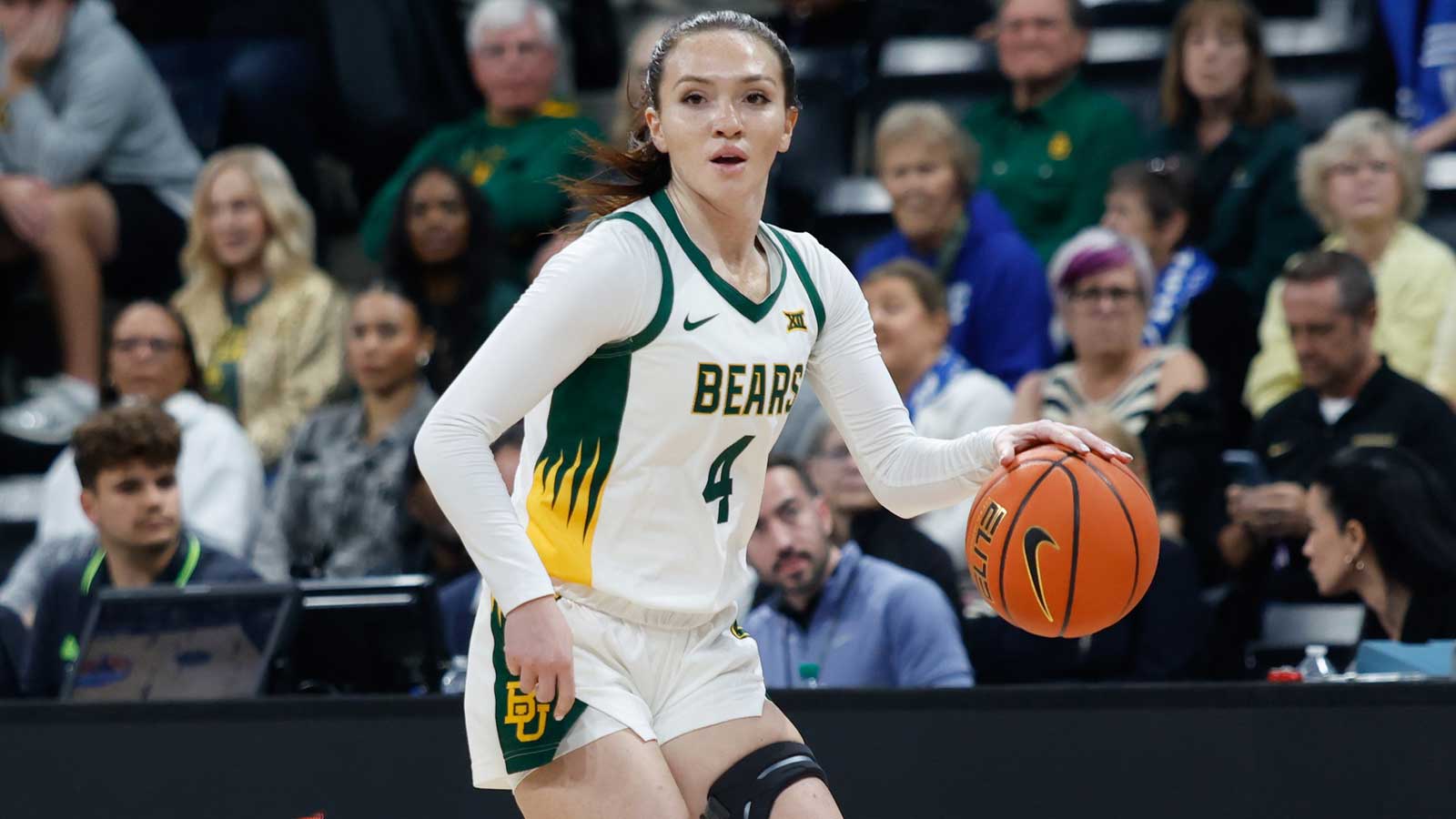As far as FAU basketball has a “star,” it would be Johnell Davis, their third year shooting guard. The Conference USA Sixth Man of the Year, Davis has joined FAU's starting lineup for their 2023 NCAA Tournament run and has acquitted himself well, averaging 17.3 points, 7.8 rebounds and 3.3 assists per game over the last two weeks. He carried FAU to the Sweet 16 with a virtuosic 29 point, 12 rebound, five assist, five steal performance against Fairleigh Dickinson in the round of 32 and then again showed off the breadth of his skillset with 13 points, eight rebounds and six assists in their Elite Eight victory against Kansas State. He's a great college player—and if not for the fact that he's a smidge undersized as a 6'4 wing, he'd be a solid NBA player as well. Still, facing the San Diego State Aztecs in the Final Four, Davis himself is ultimately not that important for FAU; instead, the Owls' hopes of advancing to the title game hinge on their ability to create—and make—open threes.
Over the course of the year, FAU has leaned on its ability to shoot the basketball—they shoot threes on 44 percent of their possessions (35th most in college basketball) and drain 36.5 percent of their threes (43rd best). Outside of big men Vlad Goldin and Giancarlo Rosado, every Owl is a threat from distance as six of their nine rotation members average at one triple per game (and a seventh, Jalen Gaffney, barely falls short at 0.8 makes per game).
Even when the Owls aren't shooting well (see: most of their 2023 NCAA Tournament run so far), they leverage the mere threat of their three-point shooting to create shots at the rim. With four guards around him at all times, 7'1 center Vlad Goldin is able to power his way to layups that he'd be too klutzy to generate in a more crowded paint. Since defenders are afraid to leave shooters alone, Davis and the rest of FAU's undersized guards can gallivant through driving lanes without worrying about help defenders digging and swiping at the ball. It's a feedback loop of good offense: FAU gets layups because teams are afraid of giving up threes so then FAU gets threes because teams are afraid of giving up layups.
Conversely, San Diego State shuts down the three point line because their defense shuts down pretty much everything. Overall, the Aztecs have the nation's fourth best defense according to KenPom. And somehow, their three-point defense in particular is even better—opponents make just 27.8 percent of their threes, yet still shoot threes on 40 percent of their possessions because the paint is impregnable.. The Aztecs turns basketball into a turf war, harassing and pushing you farther and farther out into the hinterlands of the halfcourt until there's no time left on the shotclock to do anything besides desperately heave a contested three. On their way to the Final Four, San Diego State has held its opponents to just 17 percent shooting on threes.
In this sense, the Final Four matchup between FAU and San Diego State will be determined by how well FAU can loosen up SDSU's defensive block—and three point shooting will be a major part of that. Unlike previous SDSU victims, FAU is loaded with guys who can shoot and handle the basketball well enough to punish the Aztecs aggressive defense, which floods the ball-side of the court with bodies. Theoretically, FAU has the personnel to score on SDSU–in so much that any team can score on SDSU; Davis, Alijah Martin, Bryan Greenlee, Nick Boyd and Brandon Weatherspoon can all shoot, dribble and connect on the play-switching skip passes that can deform SDSU's shell. If FAU's shooters can make enough threes to force SDSU to extend their defensive packline, they can win. If they can't, it'll be the Aztecs, not the FAU, that are hooting and hollering in the Final Four.

